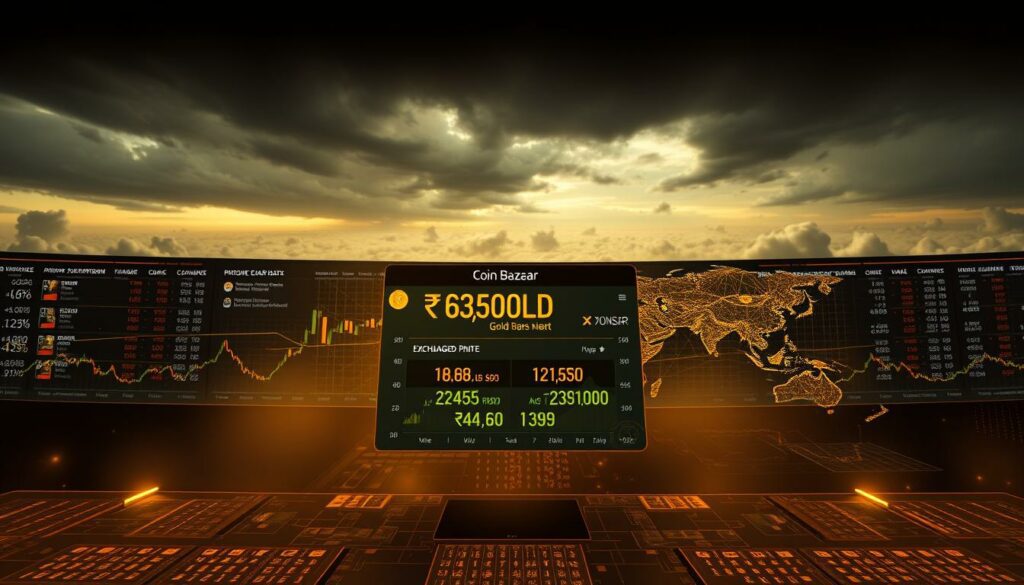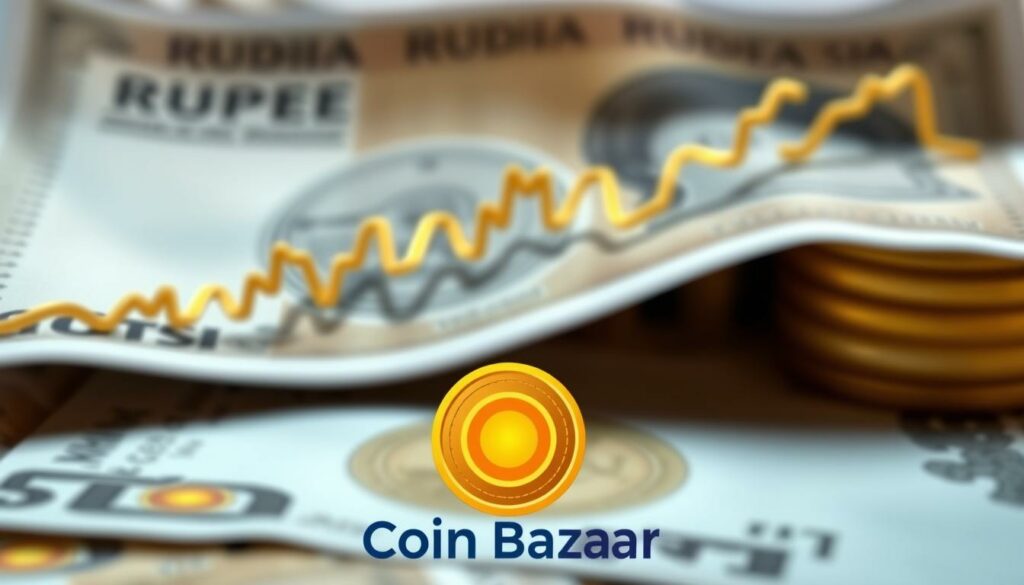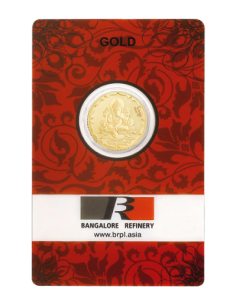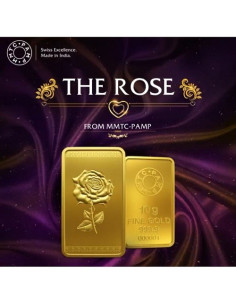Exclusive Deals & Trending Items


MMTC-PAMP 50gm Laxmi Ganesh Shankh Silver Coloured Coins of 25 Gram Laxmiji and 25 Gram Ganeshji in 999.9 Purity / Fineness
Shop NowIf you’re an investor, jeweler, or consumer, it’s key to grasp the Indian bullion retail market. The Indian gold market is shaped by global trends, economic signs, and local demand.
Global precious metals pricing greatly affects Indian bullion retail margins. This is because India consumes a lot of gold. When global gold market trends change, it impacts the Indian bullion market’s margins.
Key Takeaways
- Global gold price changes directly affect Indian bullion retail margins.
- It’s vital to understand gold market trends for investors and jewelers.
- Precious metals pricing shapes the Indian bullion retail market.
- Local demand and economic signs are key in the market.
- Indian bullion retail margins are sensitive to global market changes.
The Current State of Global Gold Markets
Exploring global gold markets shows a mix of factors affecting gold prices. The market is influenced by economic signs, supply and demand, and actions by central banks.
Recent Price Trends in International Gold Markets
International gold markets have seen big price swings lately. Gold prices change because of economic uncertainty, currency shifts, and how investors feel. For example, when the economy is shaky, gold becomes a safe choice. This boosts demand and prices.


Key Global Market Indicators for Gold in 2023
Several important indicators will shape gold prices in 2023. These include:
- Economic signs like GDP growth and inflation
- Central bank gold reserves and their market effects
- Supply and demand in big gold-using countries
Supply and Demand Dynamics
Supply and demand are key in setting gold prices. The balance between gold mined and demand from investors, jewelers, and others affects prices. For example, more demand during festivals in India can raise prices.
Central Bank Gold Reserves Impact
Central banks’ gold reserves also affect prices. When central banks buy more gold, it shows they trust gold. This can push prices up. But if they sell, demand falls, and prices drop.
Understanding Gold Price Fluctuations and Their Causes
Gold prices around the world keep changing. It’s key for those in the Indian bullion market to know why. Many things affect gold prices, like big economic signs and world events.
Macroeconomic Factors Driving Gold Prices
Big economic factors shape gold prices. Key ones are inflation, interest rates, and how strong a currency is.
Inflation and Interest Rate Correlations
Gold acts as a shield against inflation. When prices go up, gold’s value often does too. It keeps its value over time. Interest rates also play a part; high rates make bonds more appealing, which might lower gold demand.
Currency Strength and Gold Valuation
The value of major currencies, like the US dollar, affects gold prices. A strong dollar makes gold pricier for people with other currencies. But a weak dollar makes gold cheaper, attracting buyers from abroad.
Geopolitical Influences on Precious Metals Pricing
World events and politics can change gold prices a lot. Instability, conflicts, and sanctions push investors towards gold, raising its price.
| Factor | Impact on Gold Price |
|---|---|
| Rising Inflation | Increases |
| Higher Interest Rates | Decreases |
| Stronger US Dollar | Decreases |
| Geopolitical Tensions | Increases |


Knowing these factors helps predict gold price changes. It’s vital for the Indian bullion market. Keeping up with economic and world news helps make better choices.
The Unique Position of India in the Global Gold Ecosystem
India’s bond with gold is deep and historic, making it a key player globally. Gold is more than jewelry in India; it’s an investment and a sign of wealth.
India’s Historical Relationship with Gold
Gold’s history in India goes back centuries. It symbolizes wealth and is used in jewelry and ornaments. The data shows India is a big gold consumer.
The cultural value of gold in India is clear in its use at festivals and ceremonies. Gold coins are given at weddings and other important events.
Cultural and Economic Significance of Gold in Indian Society
Gold is precious in Indian culture, standing for prosperity and luck. It’s also seen as a secure investment.
Wedding Season Demand Patterns
Gold demand spikes during weddings. Jewelers see a big jump in sales as gold is key in Indian weddings.
Gold as Investment vs. Adornment
In India, gold serves as both an investment and jewelry. Some buy gold jewelry for investment, while others prefer coins or bars.
| Aspect | Investment | Adornment |
|---|---|---|
| Purpose | Gold is bought as a safe investment option. | Gold jewelry is worn as a form of adornment. |
| Form | Gold coins, bars, or digital gold. | Jewelry, ornaments. |
“Gold is not just a commodity in India; it’s a cultural phenomenon that has been passed down through generations.”
Structure of the Indian Bullion Retail Market
Exploring the Indian bullion retail market reveals a blend of old and new. It’s filled with both traditional and modern retail channels. You’ll see everything from local jewelers to big retail chains.
Key Players in India’s Gold Retail Sector
In India’s gold retail sector, a few big names stand out. Alongside them, many small and medium-sized businesses play a role. Key players include:
- Large jewelry chains like Tanishq and Malabar Gold
- Regional jewelers with strong local presence
- Online gold retailers and digital platforms
These players use different ways to sell, like physical stores, online, and mobile apps.
Traditional vs. Modern Gold Retail Channels
The Indian gold retail market combines old and new ways of selling. Traditional channels are local jewelers and family businesses. Modern channels are big retail chains and online sites.
Rural Market Dynamics
In rural areas, traditional channels are still the top choice. People often buy gold from local jewelers. These jewelers provide personal service and meet local tastes.
Urban Consumer Preferences
Urban folks, however, prefer modern channels more. They like big jewelry chains and online sites. These offer a wide selection, good prices, and a modern shopping experience.
Knowing these differences helps us see how global gold price changes affect Indian bullion retail margins.
How Retail Margins Work in the Indian Gold Market
To understand the Indian gold market, knowing about retail margins is key. These margins are shaped by the gold’s cost, making charges, and wastage charges. Both jewelers and investors need to grasp these to make smart choices.
Components of Gold Pricing in Indian Retail
Gold pricing in India involves several elements. These include the global gold price, import duties, and local taxes. Jewelers also add making charges and wastage charges.
Making Charges and Their Variability
Making charges are what jewelers ask for crafting gold jewelry. These costs change based on design complexity, the craftsman’s skill, and the jeweler’s reputation. For example, complex designs or pieces by famous craftsmen cost more.
Wastage Charges and Their Justification
Wastage charges cover gold lost during jewelry making. They’re a percentage of the gold used. Though they seem extra, they’re vital for the process, covering material loss during cutting and polishing.
Typical Margin Structures for Different Types of Gold Products
Gold product margins differ based on jewelry type, complexity, and brand. Simple gold bars and coins have lower margins than detailed designs or branded items.
Experts say, “Gold jewelry margins range from 5% to 25% based on product and brand.” Knowing these margins helps in making better buying choices.
Exploring the Indian gold market? Understanding retail margin components is crucial. Knowing about making, wastage charges, and typical margins helps evaluate gold investments.
The Impact of Global Gold Price Fluctuations on Indian Retailers
Global gold price changes are tough for Indian retailers. They affect how much they charge and manage their money. Knowing these effects is key to making smart plans and avoiding risks.
Short-term Effects on Day-to-Day Operations
Global gold price changes hit Indian retailers hard every day. They face two big problems during these times.
Pricing Challenges During Rapid Market Movements
Fast changes in global gold prices make it hard for retailers to set prices fast. This can cause inventory valuation issues and hurt profits. For example, if prices go up, retailers might not be able to raise their prices quickly. This could lead to smaller profits or even losses.
Cash Flow Management Issues
Fast price changes also mess with cash flow. The value of what you have in stock changes, which affects your money. You might have to spend more on stock when prices go up, which can hurt your cash. Managing your cash well is key to keeping your business going.
Long-term Strategic Challenges for Bullion Dealers
Global gold price changes also bring long-term challenges for Indian bullion dealers. They need to think about inventory management, pricing strategies, and investing in new technologies to stay ahead.
To tackle these challenges, you need a strong plan. This should include ways to protect against price changes, offering different products, and using technology to work better. By being proactive, you can lessen the bad effects of global gold price changes and stay competitive.
Risk Management Strategies for Indian Gold Retailers
Indian gold retailers face big challenges due to changing global gold prices. They need good risk management to stay profitable and keep their business going.
To deal with gold price changes, several strategies can help. Two main ones are hedging and managing your inventory.
Hedging Techniques to Mitigate Price Volatility
Hedging is a way to manage price risks. It uses tools like futures contracts and options. This helps you set gold prices in advance, lessening the effect of price swings on your business.
- Forward Contracts: Let you set a gold price for a future date, shielding you from price hikes.
- Options: Allow you to buy gold at a set price later, offering flexibility in shaky markets.
Inventory Management During Uncertain Market Conditions
Good inventory management is key when markets are unsure. You can use different methods to keep your inventory right and cut risks.
Just-in-Time Inventory Approaches
Just-in-time (JIT) inventory keeps stock levels low and refills as needed. This method cuts down on storage costs and reduces the risk of holding value-decreasing inventory.
Strategic Gold Reserves for Retailers
Having strategic gold reserves can act as a safety net against market ups and downs. Holding some gold ensures you can meet demand during busy times or when prices are good.
By using these risk management strategies, you can handle the challenges of changing gold prices better. This helps you stay ahead in the market.
Analyzing Gold Price Volatility in the Indian Context
Looking at historical data and seasonal patterns helps us understand gold price changes in India. The Indian market, a big gold consumer, is shaped by global and local factors.
Historical Gold Price Data in the Indian Market
Gold prices in India have seen ups and downs over time. These changes are influenced by global economic trends, local demand, and government policies.
For example, when the world economy slows down, gold prices often go up. This is because people look for safe investments. But when the economy is stable, demand drops, and prices fall. Knowing these trends helps predict future prices.
Seasonal Patterns in Price Fluctuations
Seasonal changes affect gold prices in India. Two main factors are festival seasons and agricultural harvests.
Festival Season Impact
Festival times, like Diwali and Akshaya Tritiya, see a big jump in gold demand. This leads to higher prices. Retailers sell more during these times, affecting their stock and prices.
Gold is key in Indian festivals and weddings. So, demand isn’t just for investment but also for cultural reasons.
Agricultural Harvest Correlation
Gold prices also rise during harvest seasons. Farmers buy gold with their earnings, boosting demand. This can push prices up.
“The rural demand for gold is closely linked to agricultural income, making harvest seasons critical for gold retailers.”
Understanding these seasonal patterns helps retailers and investors deal with the Indian gold market’s complexities.
The Role of Government Policies in Shaping Gold Retail Margins
It’s key to know how government policies affect gold retail margins in India. Understanding this helps you navigate the gold market better. You’ll see how government actions shape the retail scene.
Import Duties and Their Effect on Retail Pricing
Import duties play a big role in gold retail prices in India. Duties on gold imports add to the final price you pay. This can make gold more expensive, which might lower demand and sales.
The current import duty structure includes:
- A basic customs duty
- Additional duties as per government regulations
These duties not only raise costs but also affect your business’s competitiveness in the market.
Gold Monetization Schemes and Their Market Impact
Gold monetization schemes are a big part of government policy affecting the gold market. These schemes aim to:
- Make gold more useful for financial purposes
- Lessen the need for physical gold
Joining these schemes can help you use gold more efficiently, cutting down on inventory costs.
Sovereign Gold Bond Scheme Effects
The Sovereign Gold Bond Scheme lets you invest in gold without owning physical gold. This scheme:
- Is a safe investment choice
- Offers returns tied to gold prices
Knowing the Sovereign Gold Bond Scheme’s benefits helps you make better investment choices.
Gold Metal Loan Facilities
Gold Metal Loan facilities let you borrow gold from your existing gold. This helps you manage your gold better and:
- Boosts liquidity
- Reduces the need to buy more physical gold
Using these facilities can improve how you manage gold and possibly increase your retail margins.
Digital Gold and Its Influence on Traditional Retail Margins
Digital gold is changing how Indians invest in gold, affecting traditional retail margins. Digital gold platforms are making the Indian gold market different. They offer new chances and challenges for traditional retailers. Knowing how digital gold affects retail margins is key.
The Rise of Digital Gold Investment Platforms in India
The Indian gold market is changing with digital gold platforms. These platforms let investors buy and hold gold digitally. They are popular because they are easy to use, cost less, and let you invest in small amounts.
Traditional gold retailers face new challenges. The move to digital gold changes how people buy gold. It might make them buy less physical gold from stores.
How Online Gold Trading is Reshaping Retail Margins
Online gold trading is deeply affecting retail margins in India. Digital gold lets investors trade online without physical storage. This cuts down costs of buying and selling gold.
Price Transparency Challenges
Online gold trading brings a big challenge: price transparency. Digital platforms show prices in real-time. This makes it easy for shoppers to compare prices. Traditional retailers must now be more competitive with their prices.
Competitive Pressure on Physical Retailers
The rise of online gold trading puts pressure on physical retailers. Now, people can invest in gold online, not in stores. This could lower foot traffic in stores. To stay ahead, stores must offer unique products, improve customer service, and use their brand.
As the gold market evolves, it’s vital for retailers to understand digital gold’s impact. They need to develop strategies to stay competitive in this changing market.
Forecasting Gold Price Changes and Planning Retail Strategy
Being able to predict gold price changes is crucial for retailers in India. It helps you understand the market better. This knowledge is key to making smart decisions for your retail strategy.
Economic Indicators for Gold Price Prediction
Economic signs are important for predicting gold prices. Watch inflation rates closely. When inflation goes up, gold prices often rise too, as it’s seen as a safe investment.
Interest rates also affect gold prices. Higher rates can make the currency stronger, making gold more expensive. This might lower demand.
The US dollar’s performance is another key factor. A weaker dollar makes gold cheaper for buyers from other countries. This can increase demand and prices.
Adapting Business Models to Market Volatility
To succeed in a changing gold market, you must be flexible. This means not just reacting to price changes but also planning ahead. Adjust your business to reduce risks and grab new opportunities.
Diversification Strategies
Offering different products can help you not rely too much on gold. Consider selling other precious metals or jewelry with extra features. This can keep your income steady when gold prices change.
Value-Added Services to Enhance Margins
Adding extra services can also boost your profits. You could offer gold testing, appraisal, or educational workshops. These services can make your business stand out and attract customers willing to pay more for your expertise.
As a leading economist noted,
“The key to successful gold trading lies not in predicting the future but in understanding the present and being prepared for the unexpected.”
Case Studies: How Leading Indian Jewelers Navigate Price Fluctuations
Understanding how top Indian jewelers handle price changes is key. The Indian gold market is very sensitive to global prices. Leading jewelers have found ways to reduce risks and grab chances.
Success Stories from Major Retail Chains
Big retail chains in India have found ways to deal with price changes. For example, Tanishq, a top jewelry brand, uses a dynamic pricing strategy. This lets them stay competitive and keep profits up.
Tanishq’s Pricing Strategy
Tanishq’s success comes from quick market adaptation. They use data analytics to predict price changes and adjust prices. This keeps customers happy and protects their profits.
- Real-time price adjustments
- Advanced data analytics for forecasting
- Customer-centric approach to maintain trust
Lessons from Independent Jewelers Managing Market Volatility
Independent jewelers have also found ways to handle market ups and downs. They focus on local customers, offering personal services that big chains can’t. They also sell other precious metals and gemstones.
Regional Jewelers’ Adaptation Techniques
Regional jewelers have adapted by diversifying their products and meeting local needs. Some offer gold monetization schemes and other gold-related financial products. This helps customers invest in gold in different ways.
- Diversification of product offerings
- Focus on local market needs and customer relationships
- Innovative financial products related to gold
Looking at these case studies can teach you a lot about managing gold price changes. You can use these strategies to improve your business. This helps you handle risks and find opportunities in the gold market.
Conclusion
Now you know how global gold price changes affect Indian bullion retail margins. Many factors play a role, like global trends, local demand, government policies, and digital gold platforms. The Indian gold market is special, with a long history and cultural importance.
To deal with these challenges, it’s key to keep up with big economic trends, world politics, and government rules. Knowing these can help you make smart choices and find ways to succeed in the Indian bullion market.
With digital gold platforms growing, traditional shops need to change to stay ahead. Understanding how global gold prices and Indian retail margins work together helps you predict price changes. This way, you can plan your retail strategy better.



















